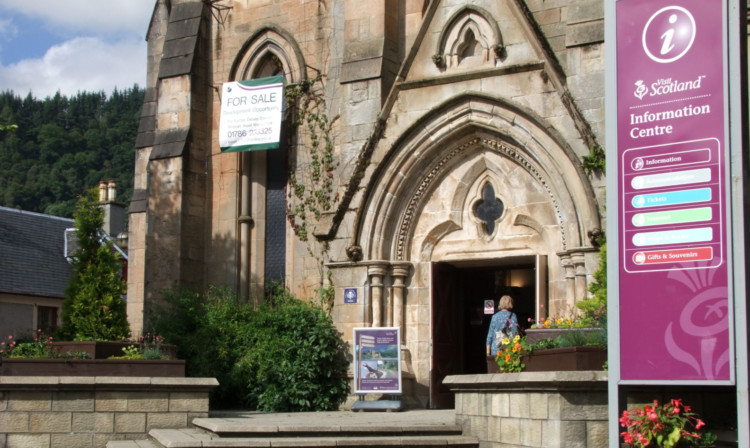A heritage charity chief has warned that Callander is facing “a major setback” through the sell-off of the former church that hosts its tourist information centre.
James Fraser, chairman of the Friends of Loch Lomond and The Trossachs, said he was worried the town was now facing a significant challenge to its position as a visitor destination.
The tourist information centre in the former St Kessog’s Church in Ancaster Square is moving to smaller premises and Stirling Council has decided it does not need the property. The council has published a sales brochure and is seeking offers of more than £100,000.
Mr Fraser, himself a former local tourism chief, said Callander had already suffered the loss of tourist accommodation and shops.
The visitor centre had been a major hub for tourism and a focal point for the town. More than 3.5 million people had passed through its doors since the council bought the church in 1989.
Mr Fraser said: “The recent announcement of the plans to close the iconic and popular Rob Roy and Trossachs visitor centre marked a very sad day for Callander and greatly weakens Callander’s role as the unofficial capital of the national park and the park’s main tourist service centre.
“It is a major setback for the local community and those who are working to make Callander a better place to live, work and visit.
“It also throws into doubt the level of commitment of some of the stakeholders to help deliver the bright new future set out in the charrette report developed almost two years ago and so enthusiastically endorsed by the local community.”
The charette a collaborative planning workshop identified the building as being important to the community and said it had the potential to be a key tourist asset.
“There was an opportunity here to pool the resources and talents of bodies with tourism responsibilities and the local community to sustain this strategically important heritage and tourist centre, which now faces an uncertain future,” Mr Fraser said.
“It also serves as a timely reminder that coordinated action is needed now to strengthen the heart of the town and ensure Callander fulfils its undoubted potential as a must-visit, year-round destination.
“It is more crucial than ever that the various agencies and the community work together and serious financial resources are allocated to deliver a bright future for Callander. It simply cannot afford to fall behind other national park gateway towns, such as Dunoon, Helensburgh and Balloch, where millions of pounds are being invested.”
Stirling Council was unable to provide a response to Mr Fraser’s comments, but its sales brochure emphasises that St Kessog’s, which was built in 1883 in the Gothic style, has the potential to attract visitors to the town and benefit local businesses.
Architects Anderson Bell Christie were asked to identify potential uses, taking into the account the size of the B-listed building, its commercial potential and community views. These include retail, a restaurant, a boutique hotel, a performance space/gallery, a training/business centre or a visitor attraction.
The ground floor currently consists of a retail area, an audiovisual space and offices, while the first floor which used to host an exhibition on Rob Roy has lain empty for several years.
Stirling Council expects bidders to offer a robust business plan that demonstratestheir proposal would be viable and sustainable.
In addition, the building will have to be used in a way that would fit in with the local authority’s vision of Callander as a high-quality place to live and visit.
